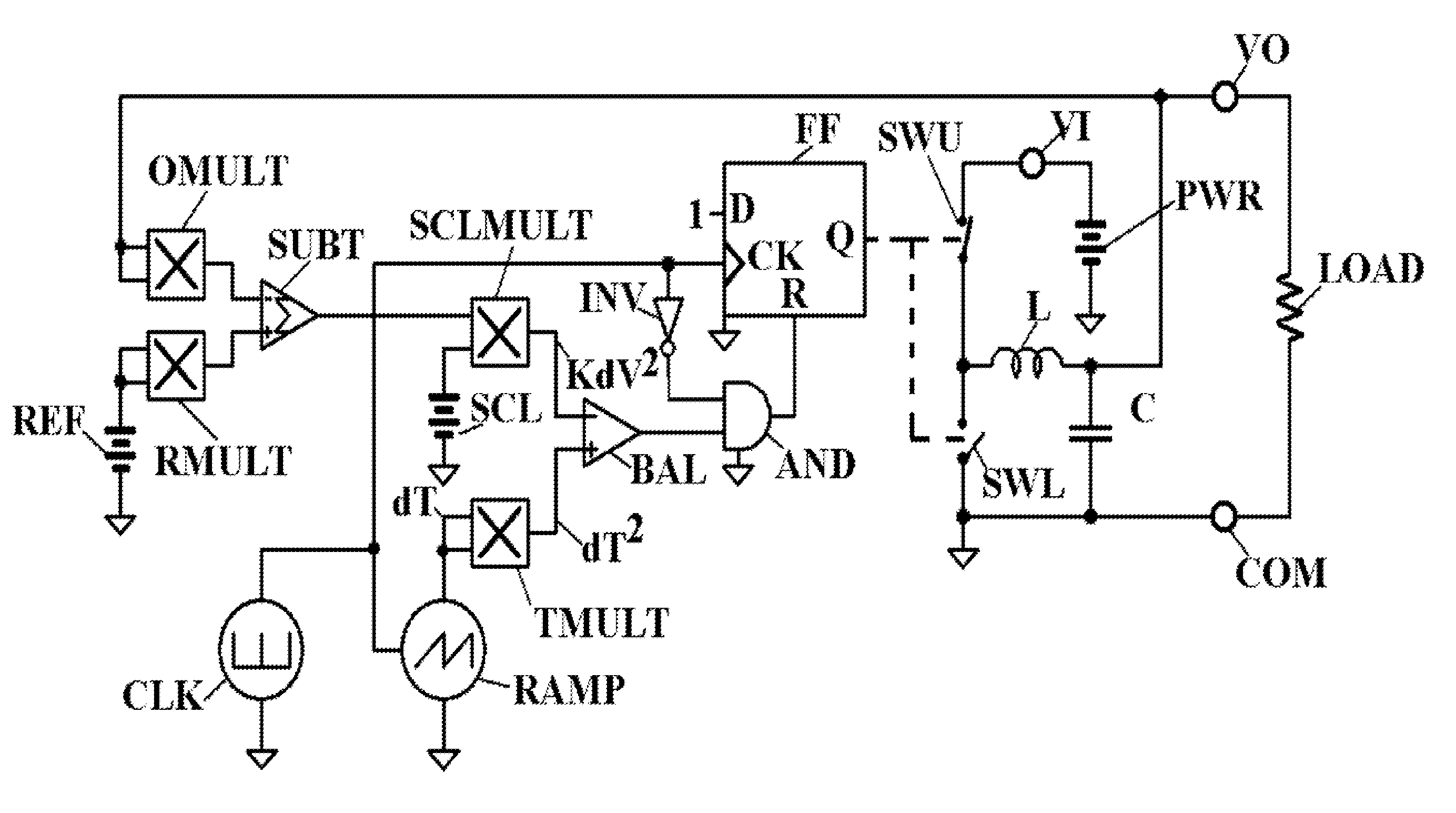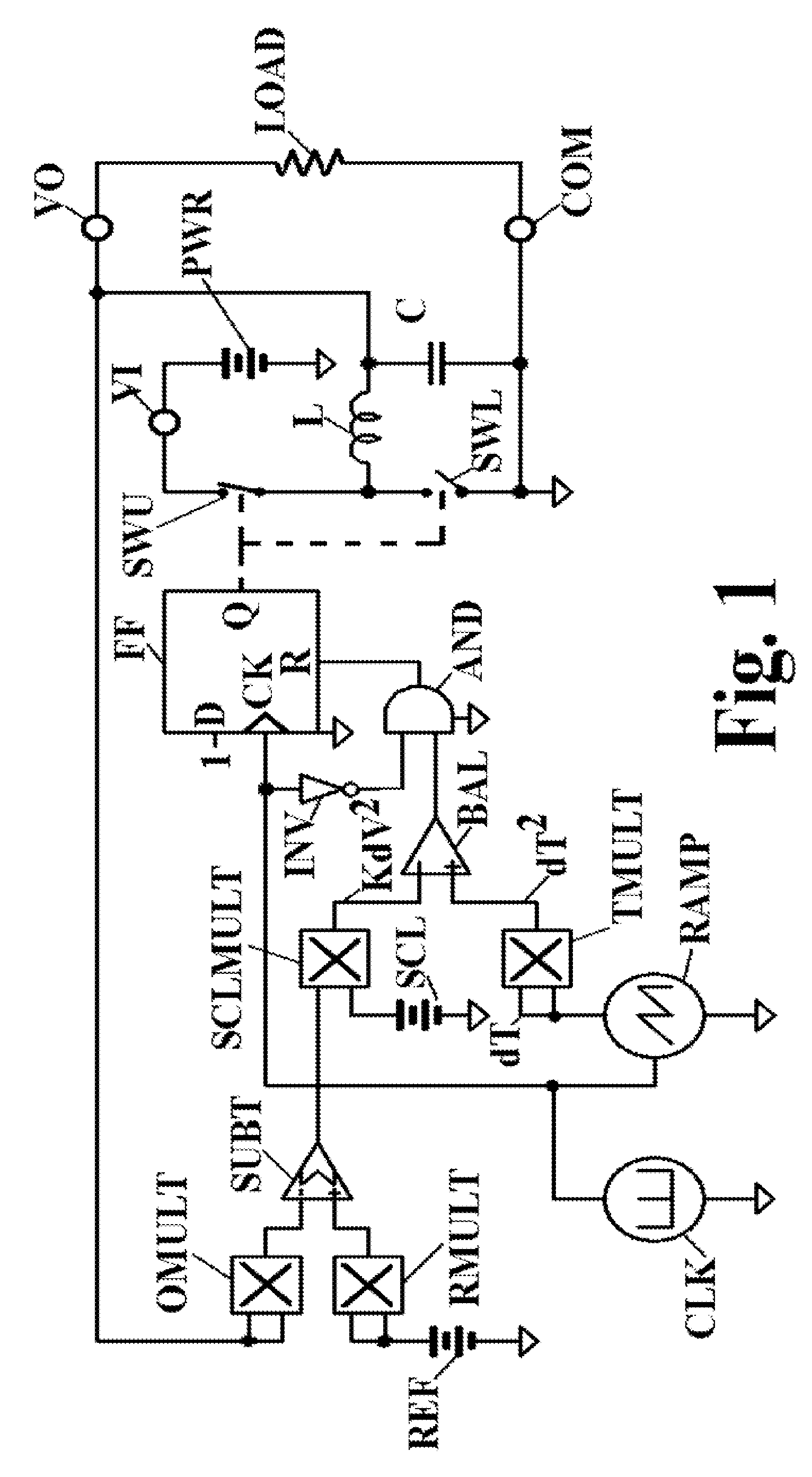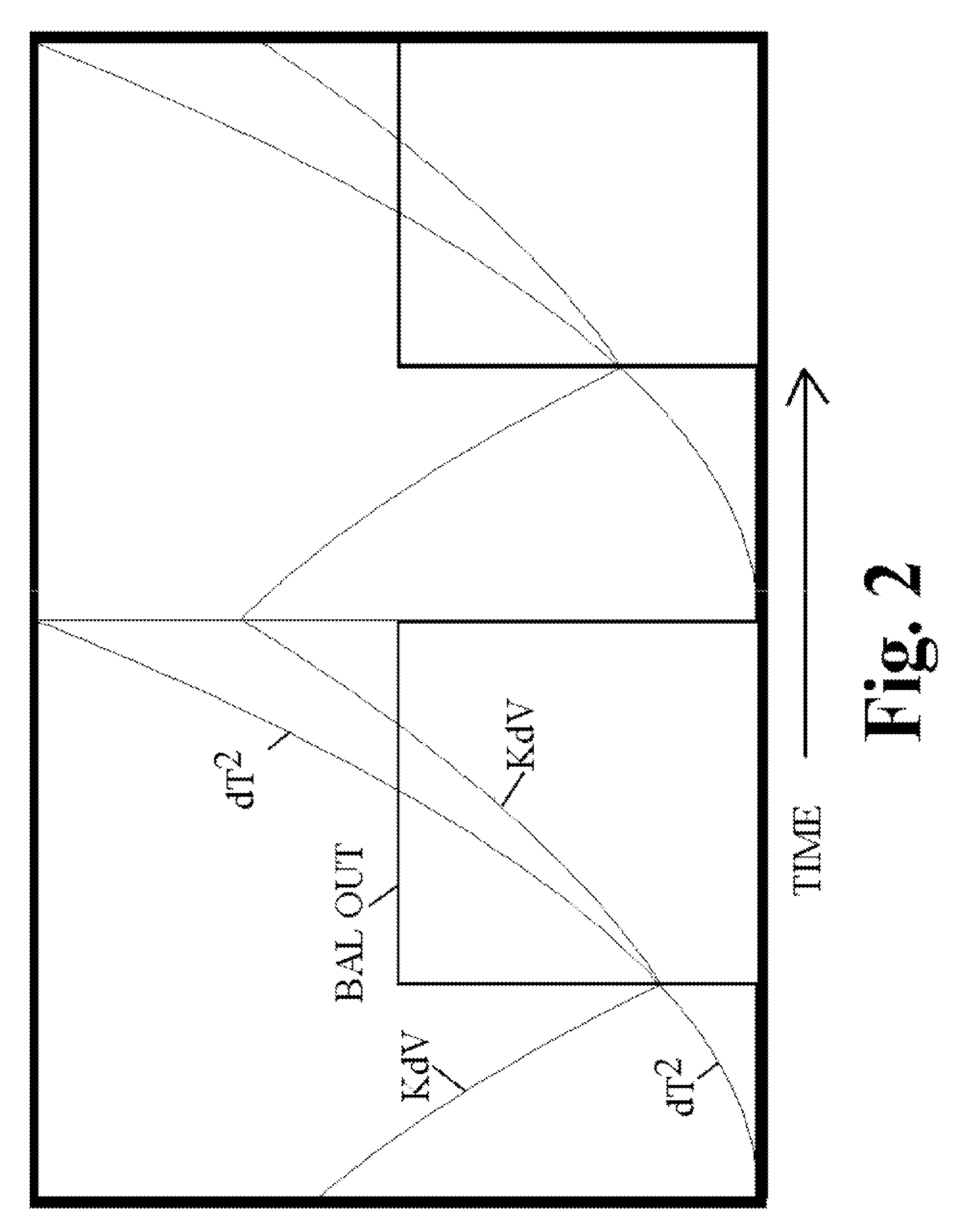Energy predictive buck converter
a buck converter and energy prediction technology, applied in the direction of power conversion systems, dc-dc conversion, instruments, etc., can solve the problems of gross misrepresentation of energy supply by the ramp, limited advantages of energy balancing in the buck converter, etc., to achieve energy balancing, maintain energy balance, and optimize transient response and stability
- Summary
- Abstract
- Description
- Claims
- Application Information
AI Technical Summary
Benefits of technology
Problems solved by technology
Method used
Image
Examples
Embodiment Construction
[0024]Referring first to FIG. 1, a conventional totem-pole switch comprises SWU and SWL, upper and lower switches respectively. Driven by D flip-flop FF, at some duty cycle between the voltage from power source PWR on terminal VI and the voltage on terminal COM, the totem pole switch presents some average voltage to inductive reactor L. Reactor L and filter capacitor C form an output filter to smooth the output voltage presented to load LOAD through terminal VO. Inverter INV and AND-gate AND prevent FF from being reset during the clock pulse from clock generator CLK. These circuit functions are well known in the prior art.
[0025]According to this invention, the voltage at VO is also applied to both inputs of multiplier OMULT, the output of which, representing the square of actual output voltage at VO, is applied to the negative input of SUBT. A voltage from source REF, proportional to desired output voltage, is applied to both inputs of multiplier RMULT, the output of which, represen...
PUM
 Login to View More
Login to View More Abstract
Description
Claims
Application Information
 Login to View More
Login to View More - R&D
- Intellectual Property
- Life Sciences
- Materials
- Tech Scout
- Unparalleled Data Quality
- Higher Quality Content
- 60% Fewer Hallucinations
Browse by: Latest US Patents, China's latest patents, Technical Efficacy Thesaurus, Application Domain, Technology Topic, Popular Technical Reports.
© 2025 PatSnap. All rights reserved.Legal|Privacy policy|Modern Slavery Act Transparency Statement|Sitemap|About US| Contact US: help@patsnap.com



